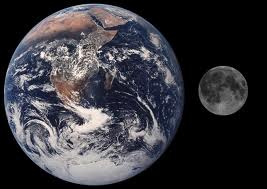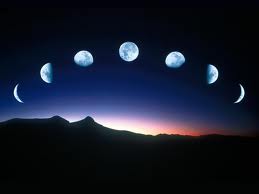Moons |
By the term moon we mean a natural satellite that orbits a planet. Earth has one satellite that we call the Moon, while other planets either have none or more than two moons with different names.
Moons also rotate and always show their same side towards their primary planet.
|
The Moon |
Our Moon is quite large relative to the size of Earth. As it rotates it always shows to us the same side and the romantics resemble it with a calm, friendly face watching and accompany them in their sleepless hours.
Its gravitation produces ocean tides and its regular cycle of phases was used to create calendars. |
 |
 |
|
But it is not the only one in our solar system. Other planets have also more than one moons. |
Other moons |
All planets besides Mercury and Venus have moons. Most of them have more than one. Some of them are larger than the Moon and Saturn's largest one, called Titan, is estimated to have substantial atmosphere. Scientists claim that Europa, one of Jupiter's moons, has plenty of oxygen and might harbor life! If we could only manage to travel so far!
Here is a numeric list for the moons of each planet: |
| Planet |
Number of moons |
| Mercury |
0 |
| Venus |
0 |
| Earth |
1 |
| Mars | 2 |
| Jupiter | 63 |
| Saturn | 62 |
| Uranus | 27 |
| Neptune | 13 |
|
If you wish to improve your knowledge and become an astronomy expert, visit this site by clicking on the spaceship. 
|
